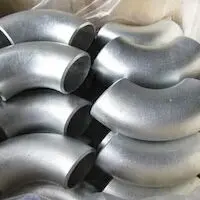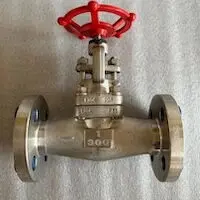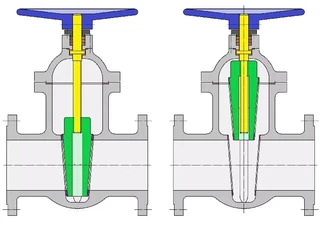Root Cause Analysis of Elbow Cracking in Hydrogen Unit Condensate Piping
Abstract: A crack was found in the 321 stainless steel elbow of the condensate pipeline serving the hydrogen production unit at a petrochemical plant, resulting in medium leakage. The failure was investigated through metallographic examination, scanning electron microscopy, energy-dispersive spectroscopy, chemical analysis, and other techniques. Based on stress evaluation and an analysis of the service environment, the failure was attributed to stress corrosion cracking. A crack was detected near the weld of an elbow on the pressure pipeline between V304 and T301 in the hydrogen production unit, resulting in leakage of the process medium. The elbow is positioned at the top of a vertical section of the pipeline and connects directly to a tee on a horizontal section. It operates at a temperature of 170°C and a pressure of 2.55 MPa. The pipeline carries process condensate (acidic water). The elbow has dimensions of 168 mm × 5 mm and is made of 0Cr18Ni10Ti stainless steel.
1. Detection and Analysis
1.1 Macroscopic Analysis of the Elbow
Cracks were observed near the weld connecting the elbow to the tee, mainly concentrated in the weld area. Axial (longitudinal) cracks perpendicular to the weld were found on the elbow body. These cracks originated on the outer surface of the elbow and propagated inward, with many penetrating through the pipe wall. Additionally, several pits were visible on the outer surface, as shown in Figure 1.
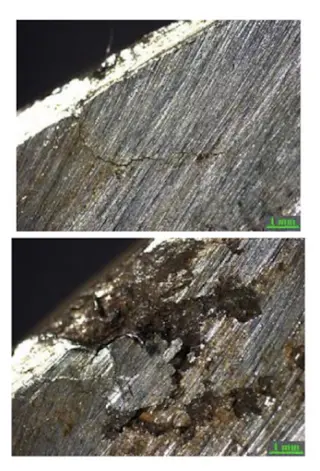
Figure 1. Macroscopic morphology of the elbow, showing cracks and pits
1.2 Material Analysis of the Elbow
According to relevant standards, chemical analysis of the elbow material was performed using a spectrometer. The results indicate that the elbow is made of 0Cr18Ni10Ti austenitic stainless steel, conforming to GB/T 1220-2007, as shown in Table 1.
Table 1 Chemical composition of elbow material (wt%)
|
Element |
C |
Si |
Mn |
P |
S |
Cr |
Ni |
Ti |
|
Elbow |
0.0531 |
0.710 |
1.11 |
0.0358 |
0.0043 |
17.8 |
10.1 |
0.391 |
|
OCr18Ni10Ti Standard (wt%) |
≤0.08 |
≤1.00 |
≤2.00 |
≤0.035 |
≤0.030 |
17.00–19.00 |
9.00–12.00 |
≥5 × C%–0.7 |
1.3 Metallographic Inspection of the Elbow
Metallographic samples were taken from the crack tip and the weld zone of the elbow. After pre-grinding, polishing, and etching, the samples were examined under a microscope. The crack was found to originate from the outer wall of the elbow and propagated inward along intergranular paths, exhibiting a dendritic morphology. Pits of varying sizes and depths were observed on the outer wall at the crack initiation site. The crack morphology exhibited characteristics typical of stress corrosion cracking in austenitic stainless steel. The microstructure of the elbow was fully austenitic, with no obvious sensitization detected near the weld zone. No cracks were found within the weld itself, and the fusion between the weld and the base metal was sound. The weld microstructure consisted of cast (dendritic) austenite with a small amount of ferrite. However, small cracks were observed at the root of the fusion zone between the weld and the elbow’s inner wall. These cracks were straight and unbranched, differing from those on the outer wall, and exhibited characteristics typical of fatigue fractures. Additionally, some cracks originating from the outer wall were found to have extended into the weld.
1.4 Scanning Electron Microscope (SEM) Analysis of the Elbow Fracture
A scanning electron microscope was employed to examine the fracture surface of the elbow and analyze its elemental composition. The fracture surface was covered with numerous corrosion products, which appeared relatively loose. Energy-dispersive spectroscopy (EDS) analysis revealed that the primary elements present in these corrosion products were C, O, Al, Si, Cl, Ti, Cr, Mn, Fe, and Ni. Among these elements, Ti, Cr, Mn, Fe, and Ni are constituents of the base metal. The presence of oxygen and chlorine was identified as the main cause of pitting and stress corrosion cracking in the elbow, as shown in Figure 2.
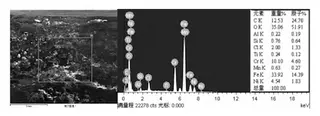
Figure 2 SEM+EDS of elbow fracture
2. Comprehensive Analysis
For austenitic stainless steel, stress corrosion—especially chloride-induced stress corrosion—is a primary mode of failure. Generally, the conditions necessary for stress corrosion include a susceptible metal with a specific microstructure, a corrosive environment, and the presence of sufficient tensile stress. The condensate pipeline, elbow, and weld are all made of austenitic stainless steel. The elbow is manufactured from 0Cr18Ni9Ti (321) stainless steel, which is susceptible to pitting and stress corrosion in environments containing corrosive agents such as chloride (Cl⁻), sulfur (S), and oxygen (O). The corrosion damage observed on the elbow was mainly caused by chloride ions, starting on the outer surface and gradually progressing inward. This indicates that the chloride ions causing pitting and stress corrosion likely originated from the external environment, such as the pipeline’s insulation materials or natural factors like wind, frost, rain, and snow. When water vapor containing corrosive substances (such as Cl⁻, O, S, etc.) condenses on the pipeline’s outer surface—often caused by damage to the external insulation layer—it can result in corrosion of the stainless steel. Stress corrosion cracks were primarily concentrated near the elbow’s weld area, especially within the heat-affected zone (HAZ). Although no significant sensitization was detected in the HAZ of the elbow or pipeline weld, considerable residual stresses from welding still exist in this area. Additionally, operational stresses on the pipeline increase the overall stress levels. The combination of a susceptible material, exposure to corrosive media (primarily chloride ions), and localized stress concentrations resulted in stress corrosion cracking in the elbow.
3. Recommendations
(1) Carry out routine maintenance and ensure the external insulation of the pipeline remains intact to prevent localized damage. Such damage can allow water vapor containing corrosive elements (O, S, Cl⁻) to condense on the pipeline’s outer surface, leading to stainless steel corrosion.
(2) Ensure high-quality welding at the elbow-to-pipeline joint. Avoid welding defects and minimize localized stress concentrations in the weld zone to reduce the risk of stress corrosion cracking.
Send your message to this supplier
Related Articles from the Supplier
Related Articles from China Manufacturers
Gate Valve Leakage: Root Causes and Solutions
- Feb 23, 2024
Finish the Field Test on Root Fertilizer
- Jun 03, 2016
Related Products Mentioned in the Article
XIAMEN LANDEE INDUSTRIES CO., LTD.
- https://www.landee.cn/
- Address: NO. 321 JIAHE ROAD, XIAMEN, P.R.CHINA 361012
- Phone: 86-592-5204188
- Business Type: Trading, Manufacturer,
Supplier Website
Source: https://www.landeepipefitting.com/root-cause-analysis-of-elbow-cracking-in-hydrogen-unit-condensate-piping.html

